Sri Ananthapadmanabha Swamy Temple is Vibrant with the spiritual power of Lord Mahavishnu is located near the northern end of Kerala, in Ananthapura near Kumbla in Kasaragod District. The temple is known as the moolasthanam, the original source, of the Sri Anantha Padmanabha Swamy Temple of Thiruvananthapuram, the capital of Kerala State, which is in the far south.
The Landscape on the way to the temple opens a vast panoramic scene with ranges of sprawling hillocks on the background. An aura of peace and solitude permeater the whole region. On the midst of a vast grass land remains in splendorous charm Sri Anantha Padmanabha Swamy Temple, in the centre of a rectangular lake.
The piligrim is reminded of the Puranic Symbology of Lord Vishnu, the all-perrading and timeless supreme reality, resting on the serpent Anantha, representing the endless phenomenon of time, and floating in the Ksheera Sagara, the ocean of Milk, representing the endless energy of creation
SRI ANANTHA PADMANABHA SWAMY LAKE TEMPLE
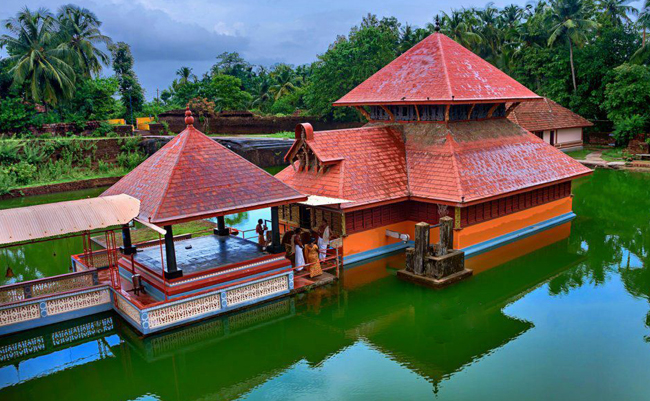
Bekal Fort
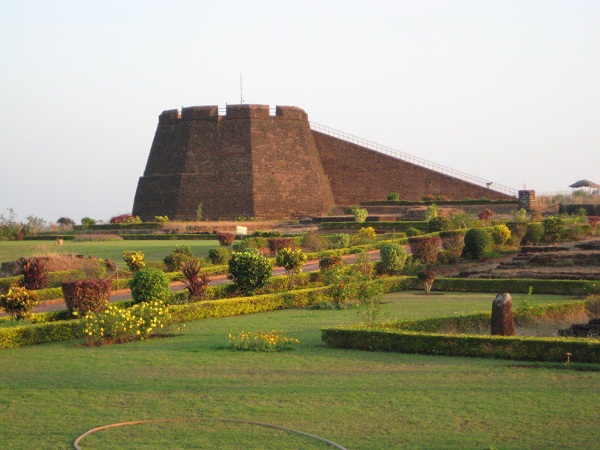
Madhur Temple
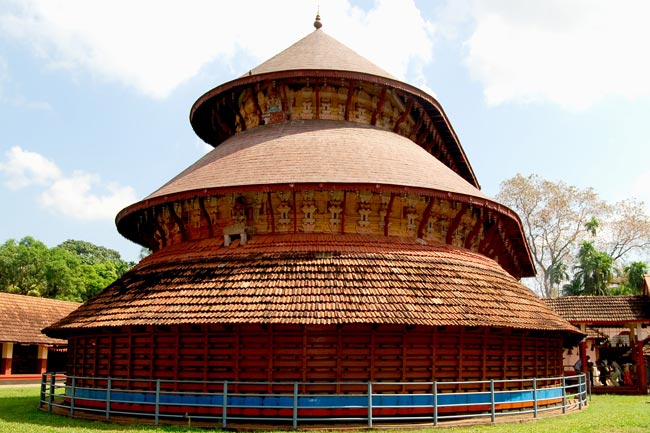
GURUVAYOOR
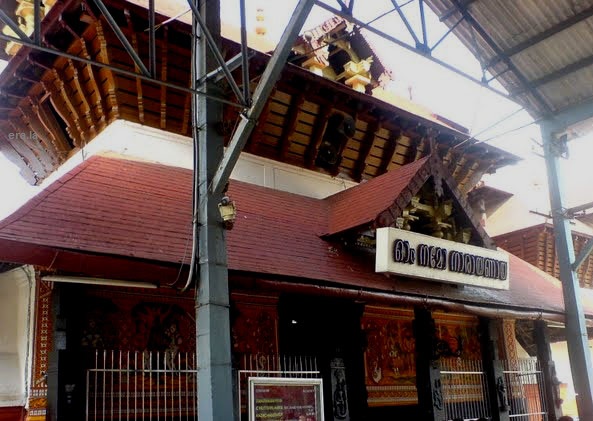
Thekkady
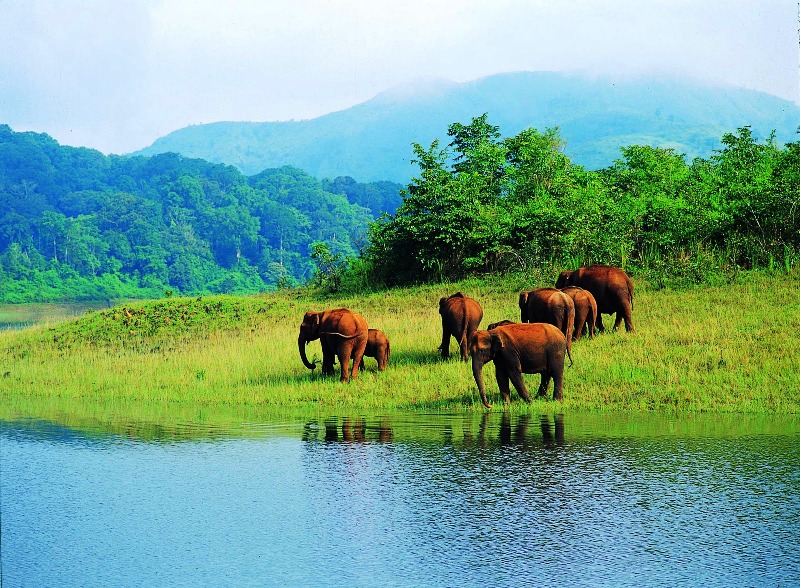
Munnar
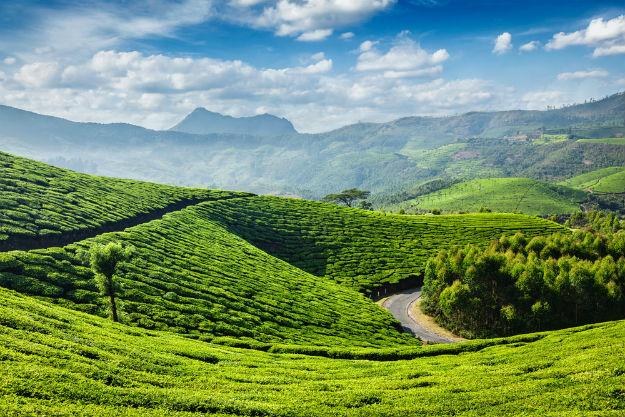
Parassinikkadavu Muthappan's temple
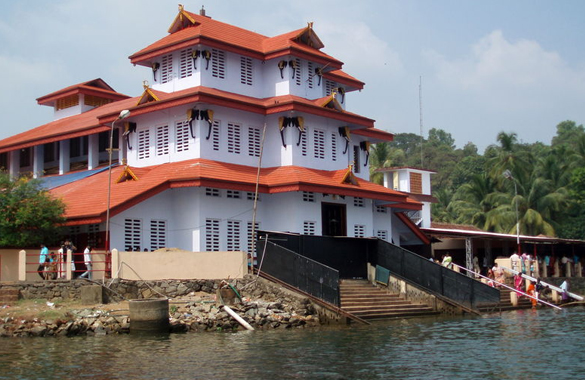
The unique Bekal Fort stands amidst the roaming but heartening music of the seas along with the eternal note of the unending waves, carrying the thrilling memories of a bygone era. This foremost souvenir of the ‘Gods own Country’ remains undeterred over the ages as a silent witness to centuries of eventful yester years. The Bekal Fort has been a source of attraction for historians, tourists and nature – lovers for centuries since it embodies memories of a glorious past.
The Fort appears to have been built up from the seas since almost three fourth of its exterior is drenched and the waves do stroke the citadel. The Hanuman temple and the ancient Muslime Mosque nearly hold testimony to the age-old religious harmony that prevailed in the area. The zigzag entrance and the trenches around the fort show the defense strategy connected with the fort.
The Sree Madanantheswara Sidhivinayaka Temple, also known as Madhur Temple, with its unique three-tiered dome, copper-plated roofing and a cloistered court, rises majestically against the beautiful landscape of the Madhuvahini River. Believed to contain the essence of spirituality, a cleansing dip here is considered to be purifying. The temple situated at Madhur is about 8 km northeast of Kasaragod.
Guruvayoor is one of the most sacred and important pilgrim centres of Kerala. Its main attraction is the Sree Krishna Temple, considered the Dwaraka of the South. This historic temple is shrouded in mystery. According to belief, the temple is the creation of Guru, the preceptor of the Gods, and Vayu, God of the winds. The eastern NADA is the main entrance to the shrine. In the Chuttambalam (outer enclosure) is the tall 33.5 m high gold plated Dwajasthambam (flag-post). There is also a 7 metre high Deepasthambam (pillar of lamps), whose thirteen circular receptacles provide a truly gorgeous spectacle when lit. The square Sreekovil is the sacred sanctum sanctorum of the temple, housing the main deity. Within the temple there are also the images of Ganapathy, Lord Ayyappa and Edathedathu Kavil Bhagavathy.
The very sound of the word Thekkady conjures up images of elephants, unending chains of hills and spice scented plantations. The Periyar forests of Thekkady is one of the finest wildlife reserves in India. Spread across the entire district are picturesque plantations and hill towns that hold great opportunities for treks and mountain walks.
Munnar is a town in the Western Ghats mountain range in India’s Kerala state. A hill station and former resort for the British Raj elite, it’s surrounded by rolling hills dotted with tea plantations established in the late 19th century. Eravikulam National Park, a habitat for the endangered mountain goat Nilgiri tahr, is home to the Lakkam Waterfalls, hiking trails and 2,695m-tall Anamudi Peak.
Parassinikkadavu is noted for the famous Muthappan temple where people go for worshipping Sree Muthappan. This is the only Hindu Temple in Kerala where a Theyyam performance is a daily ritual offering.
Tradition has it that for the Annual Festival, Ulsavam, of the Muthappan Temple at Parassinikkadavu to start, a procession led by a female member of the “Thayyil” clan of Thayyil, Kannur begins from the family home and terminates at the main altar of the temple with a ‘pooja’ (prayer) to the Gods.
Parassinkkadavu is also noted for the Parassinikkadavu Snake Park which is committed to the preservation and conservation of snakes. There are about 150 varieties of snakes including the spectacled cobra, King cobra, Russell’s viper, Krait and Pit Viper living in the park.

